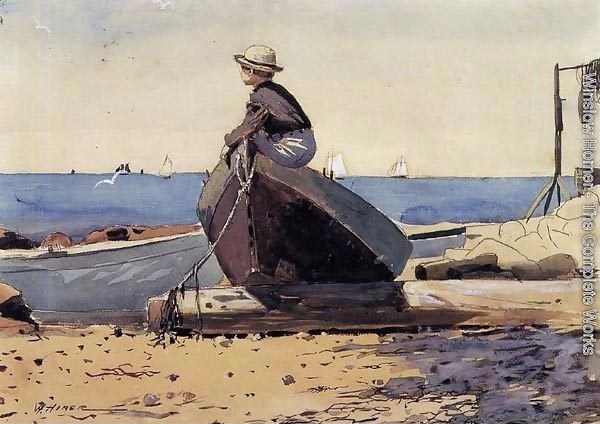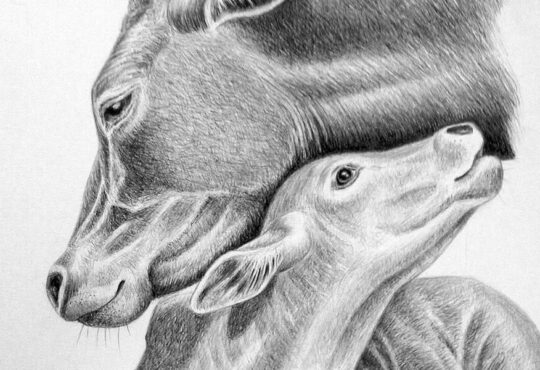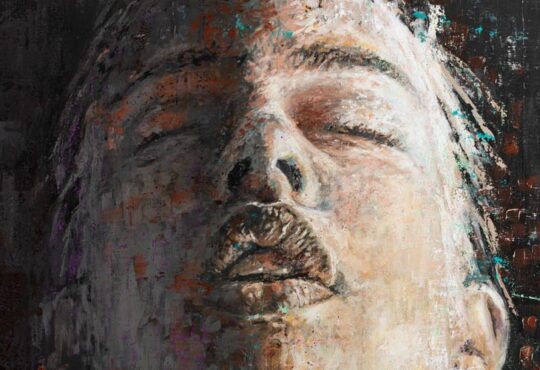Winslow Homer: Childhood, Education, and Career
American painter Winslow Homer is regarded as one of the most important realist painters of the 19th century, particularly for his works on the sea. He began working for himself as an illustrator. His oil paintings have a great deal of expressiveness.
He later developed into a master of watercolors and sketching. He painted the conflict of war and its dismal realities both during the Civil War and later. Later, he made his home in Prouts Neck, a little town close to Portland, Maine, and maintained a solitary existence, concentrating largely on themes like the sea and the conflict between nature and man.

All About Winslow Homer
Childhood
Homer Winslow’s famous birthplace was in Boston, Massachusetts, in early 1836. He came as the second born of New Englanders Charles Homer and Henrietta Benson.
When his parents relocated to the Cambridge region of Massachusetts, he was six years old. Winslow learned painting fundamentals from his mother, Henrietta, a watercolor artist. Charles, his father, was a brash businessman. Winslow grew up alongside his two brothers, Arthur Benson Homer and Charles Savage Homer, Jr.
When Winslow was thirteen years old, his father closed his hardware business to participate in the gold rush in California. He moved to Europe to make additional money when the trip was unsuccessful. After graduating from high school, Winslow started working as an apprentice for Boston-based lithographer J. H. Bufford at 19.
At first, he imitated the creations of other painters. But shortly after, he started submitting his illustrations to magazines like Harper’s Weekly and Ballou’s Pictorial.
Education
As a result, artist Winslow Homer relocated to Emerging York in 1859. At the time, the city was a significant hub for the publishing and creative activity. There was a heated competition between the previous generations of Hudson River School painters and new European tendencies. In the fall of the same year, Homer enrolled in courses at the National Academy of Design shortly after opening his studio there.
He took a month of tuition from Boston painter Frederick Rondel (whom he may have previously known), perhaps early in 1861, who showed him how to use his paintbrush, set his palette, and other techniques once a week on Saturdays. Homer attended further lessons at the school in 1863, although he attributes his major education to studying the environment rather than any particular tutor.
The young artist saw traveling to Europe as the obvious next step in honing his abilities, but while the US Civil War raged on, such plans were left to wait.

Career
By 1857, Homer had established himself as a complete freelancer and had turned down an invitation to work regularly for “Harper’s Weekly.” Instead, he relocated to New York City in 1859, where he proceeded to work as a self-employed artist.
Homer opened his own workshop in one of the famous studio buildings. He initially displayed his paintings at the “National Academy of Design” the following year. Up until 1863, he also took classes at the institution.
In 1861, he painted Civil War battle scenes while working there as a publisher and graphic chief for “Harper’s Weekly.” “Home, Sweet Home,” “Prisoners at the Front,” and “Field Veterans” are just a few of Homer’s impressive artworks that cover this common subject.
Despite having a workshop in New York City, he frequently visited the Hudson River valley and Pennsylvania, New England, to sketch. Artist Winslow Homer created works like “Long Branch, New Jersey” and “Snap the Whip” after returning to the United States. In the former, Winslow Homer Print women were shown strolling along a beach, while in the latter, kids were shown playing in a grassland.
Mature Period
Winslow Homer visited Europe in 1867, taking his artwork with him, and spent over a year there. The young American’s trip to France occurred during realist painting exhibitions by Manet and Courbet, among others. Homer’s art gained popularity in the 1870s, and in the summer of 1873, while living in Gloucester Massachusetts, he started seriously focusing on watercolor painting.
He continues to be considered the greatest American painter now associated with the genre. However, the reviews of his artwork had mixed reactions even as his fame continued to grow. As a result, Homer significantly reduced his social activities around 1880 in favor of a more sedate existence in small towns. During the summer, he moved to an area in Gloucester Harbor.
Some assume this was caused by a string of letdowns or other emotional upheavals, although it is hard to establish this because Homer was so secretive.
Later Career
Homer initially relocated to the sleepy coastal town of Cullercoats in England, where he resided from 1881 to 1882, after abandoning the bustle of New York. He painted the water more than the activity on the seashore in the coming years. He was motivated by a trip to the Canadian province of Newfoundland’s Grand Banks.
While there, he spent a significant time with a fishing fleet. In his 1885 painting “Fog Warning,” a lone fisherman was depicted in a foggy environment, possibly making plans to return home. In addition, a few vivid Winslow Homer watercolor paintings were created during the same period while he was visiting the Caribbean and Canada.
By 1890, Homer had produced several modern works with ambiguous meanings well-liked by his followers. To this day, many admirers try to learn about Winslow Homer to get the inspiration they are looking for.
Conclusion
When American artists and commentators debated the merits of European influences, Winslow Homer’s work played a significant role in forming an American creative sensibility. Moreover, his staunch independence was a source of inspiration for others in his own day. It is appropriate that his impact would be as wide for a painter whose successful career explored a variety of media, from printing to watercolor to oil painting.







